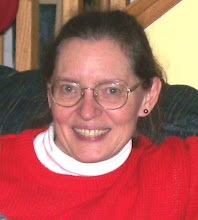SEATING
Ceremony Seating
In a Christian wedding, the bride's family and friends are seated on the left side of the church facing the altar. The groom's family and friends will sit on the right side of the church. In a Jewish wedding, this is reversed. Also, all parents remain standing under the Huppah throughout the ceremony.
When bride's parents are divorced, but not remarried, if they are congenial, they might sit together in the left front row at Christian weddings. Otherwise the parent who raised you (and guest or spouse) sits in the left front pew and the other parent (and guest or spouse) sit in the third row on the left side. This is also an individual decision, depending on their relationships and preferences. For groom's parents, simply reverse the seating (using the right side). At Jewish ceremonies, women sit on the left and men on the right.
If one family has many more guests than the other, everyone may sit together without assigned sides of the church. This will even out the seating and fill up the church from the front to back.
Parents of both sides sit in the first or second pew on their respective sides (often times the first pew is left empty in case someone from the bridal party must sit down during the ceremony). Grandparents sit in the next pew on the outside (next to the isle). Siblings can also sit in the grandparents pew. You can reserve additional pews for other honored guests (like family of flower girl and ring bearer, etc.) The reserved pews can be marked with flowers, etc. or the ushers can just seat the guests behind the reserved pews.
Guests who arrive after the bride's mother has been seated should not be seated by the ushers. They may simply slip into an empty pew behind the other seated guests.
Reception Seating
Many brides say seating arrangements at the reception is their biggest headache. Don't seat older guests near the band or kitchen. Seat people who share hobbies or occupations together. Single guests and teens or children can be seated together. Consider a chaperone or entertainment on children's tables. Seat divorced parents separately, each with their own table of family and friends. This is also a parents choice depending on their civility. They may choose to sit together at a parents' table. Seat spouses or guests of attendants at head table if bridal party is small, or together on one table if bridal party is large. Consider seating smokers together and away from non-smokers if possible.
In EZ Wedding Planner, there is a seating feature that lets you easily arrange and rearrange all of your guests (either by number in party or by those who have said they will be attending). This will let you add, size, and populate reception tables.
If you have a head table, the wedding party should be seated facing the guests, so that everyone can see. Your groom should sit to your left, your maid of honor will sit next to the groom, and the best man will go next to you. The bridesmaids and groomsmen will be seated alternately around the rest of the table. You may also wish to include the clergy-person, your parents, the groom's parents, grandparents, and godparents.
Many couples are foregoing the head table in favor of regular smaller tables, like the guests sit at. One benefit of this is that you can also seat spouses or guests of the wedding party with their respective attendant. Some feel this is more comfortable for everyone involved in the wedding. It also takes up less room than a head table, if space is limited. Individual tables are also less formal, depending on the atmosphere you want at your reception.
If you are designating seating, write out guests' names and table numbers on table cards. These cards can be set on a table by the door, arranged in alphabetical order. If you write the guest's name on both sides, it is easier for guests at the same table who do not know each other to talk to each other. Or a master seating chart can be posted with each guest's name and table number.




No comments:
Post a Comment